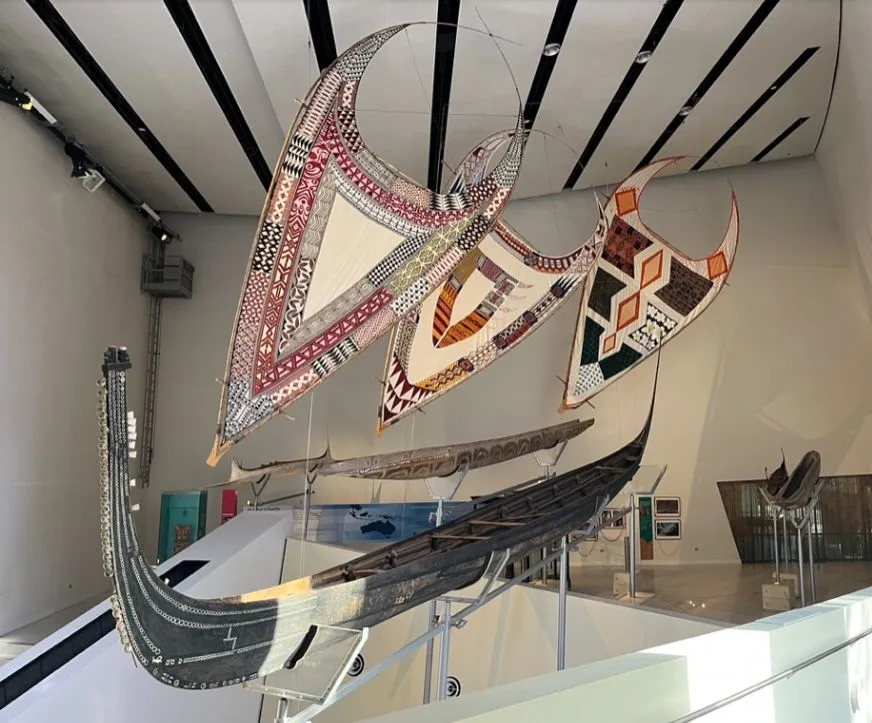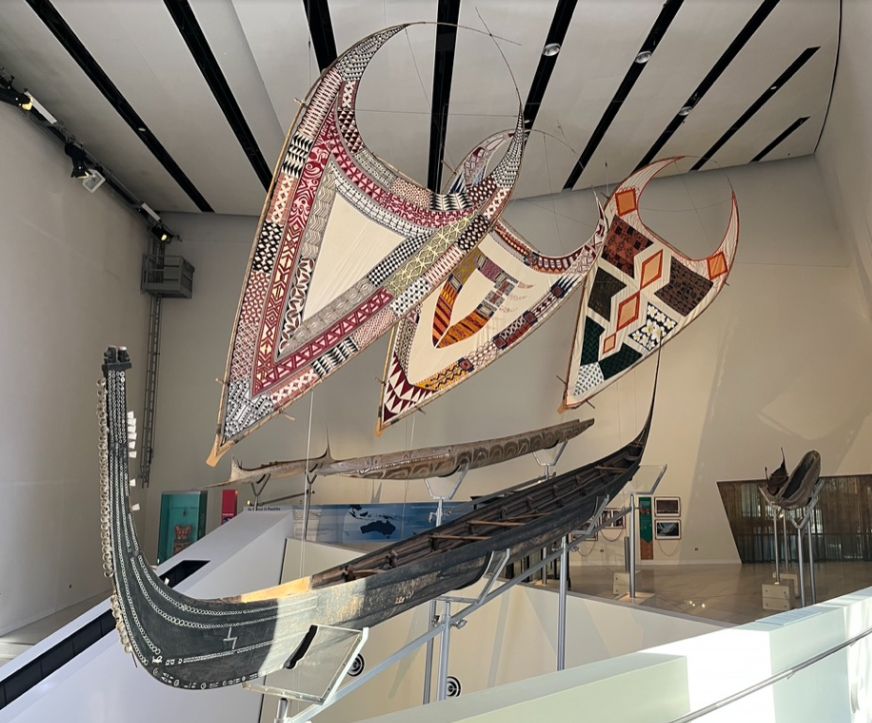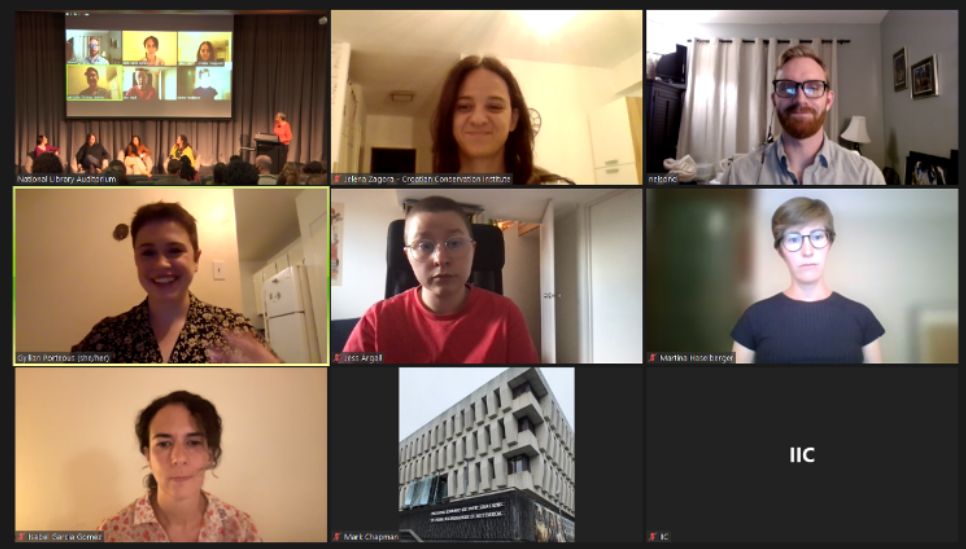Session 3
Submitted by sharragrow on 07 Sep 2022

Session 3: Working with Communities
Reflections - Jessica Argall
In this session, we examined five projects which centred around working closely with communities. This was particularly interesting following the previous session on repatriation and decolonisation of conservation practices, as we had the opportunity to see how some of the ideas raised in those discussions might be enacted.
Isabel Garcia Gomez (The Quest for Improved Collection Care: Opportunities for Participatory Processes Involving Distant Source Communities) outlined how the Geneva Museum of Ethnography (MEG) has aimed to shift its conservation and acquisition practices and development of knowledge surrounding sacred and secret objects. A care-based approach was suggested based on the French concept bientraitance, which involves the respect for rights and dignity, balanced relationships and fighting against abuse and negligence. I was particularly interested in MEG's aims to gradually and systematically build knowledge surrounding objects and activate them through ongoing exchanges with source communities, and how this stands in direct contrast to institutional timelines related to exhibition and display. Challenging institutional notions and Western constructs of time seems an interesting way to interrogate conservation practices and the ways in which we seek and acquire knowledge.

Sarah Murray and Emily Fryer (Collaboration as a Solution to the Challenge of Re-instating the Statue of Scott after the Canterbury Earthquake, New Zealand) detailed the repair of the Statue of Scott and reinstatement atop its plinth. Following earthquake damage, treatment requirements included resilience to future earthquakes, aesthetically seamless repairs and potentially risky intervention. Particularly impressive was the substantial network of stakeholders, community members and collaborators of varied professions involved in the project. Murray and Fryer noted that the success of the collaboration was due to all parties being behind the concept. This project highlighted that conservation is at its best and most successful when the desires and views of the community are prioritised and when an undertaking is a collaborative, interdisciplinary one.
Reflections - Jelena Zagora
Reinstating lost, intangible values of cultural heritage that can only be felt through respect and reconnection to the living communities from which they came–this idea is what brings together all presentations of this intriguing session. Efforts to retrieve spiritual and emotional ancestral knowledge embedded within the materials of cultural objects and their original meanings–to enable proper contextualization–will ensure continuity of diverse identities, merging past and present by creating new relationships and collaborations.
For a conservator, facing people with material traces of their ancestors can be deeply moving and resonant both professionally and personally. Erina McCann and Jade Hadfield (Museums Victoria, Australia) demonstrated this, both coming from Moana culture with all its diversity and shared values which are still deeply rooted in nature and the core of humanity. They explained interconnected concepts such as taonga, mauri and teu le vā that reflect the inseparability of physical and spiritual realms and relationships as integral parts of both their culture and newly developed community-centered conservation approaches. As someone with insights in both western and indigenous cultures and conservation practices, when asked to compare the two cultures Erina evoked seeing all the dimensions of objects through the prism of a descendant of the makers’ culture and emphasized the importance of heart.
Martina Haselberger from the University of Applied Arts in Vienna presented her work as a team member of a large conservation project within a living heritage site in Patan Durbar Square, Kathmandu Valley (Nepal), sharing the enriching experiences and hardships of compromise. Local community is inseparable from the intangible spiritual and social values of this complex heritage site with long continuity of use. When asked to elaborate on the statement that “Kathmandu has a growing population of ‘outsiders’ who seem uninterested in traditional structures and practices” and “whether or not there have been attempts to educate them on preservation”, she responded that the majority is still far away from this level of awareness.

Gyllian Porteous and Nicholas Nelson-Delong presented a groundbreaking joint effort of reconnecting the Native American communities of South Carolina with a dugout canoe made and used by their ancestors 4,000 years ago. It seems that conservation, archeology and all related fields in South Carolina are truly interested in reinstating Native American identity, dignity and authority, fostering inclusion, respect, reconciliation and learning from the vast traditional knowledge, culture and values that they have. Hopefully, living environments and working opportunities available to Native communities in the rest of United States are progressing in this direction as well.
We can all be proud to be a part of the conservation community, now reaching such a profound level of sensibility and promotion of truly human values. The profession has begun fostering equity and intercultural reconciliation in a distressed contemporary world to improve reality and dignify; celebrate human life within a greater whole, in all its forms, colours, layers, relations and innumerable expressions through the entirety of culture. This is best illustrated with the authors’ unanimous positive responses to Vicki-Anne Heikell’s question about maintaining contacts with the populations linked to collections and artworks they care for.
Authors
Jessica is a Masters student at the Grimwade Centre for Cultural Materials Conservation.
Jelena is a paintings conservator at the Croatian Conservation Institute.
Image Cations
Installation view from the upper level of Te Pasifika (Melbourne Museum), the redevelopment of which, using a community-centred approach, is outlined by McCann & Hadfield. Image courtesy of Jessica Argall.
Screen shot of the Q&A Zoom session, Image taken by Jelena Zagora from Session 3: Working with Communities.